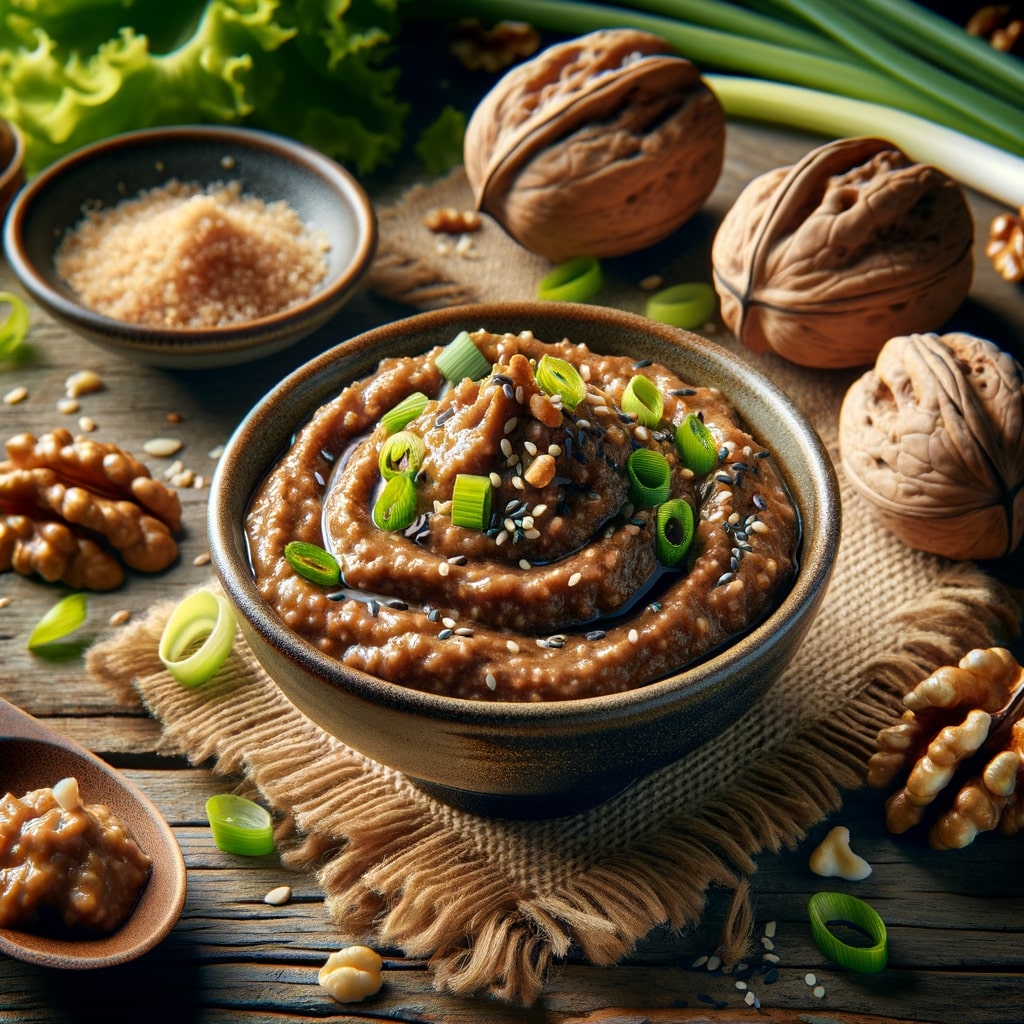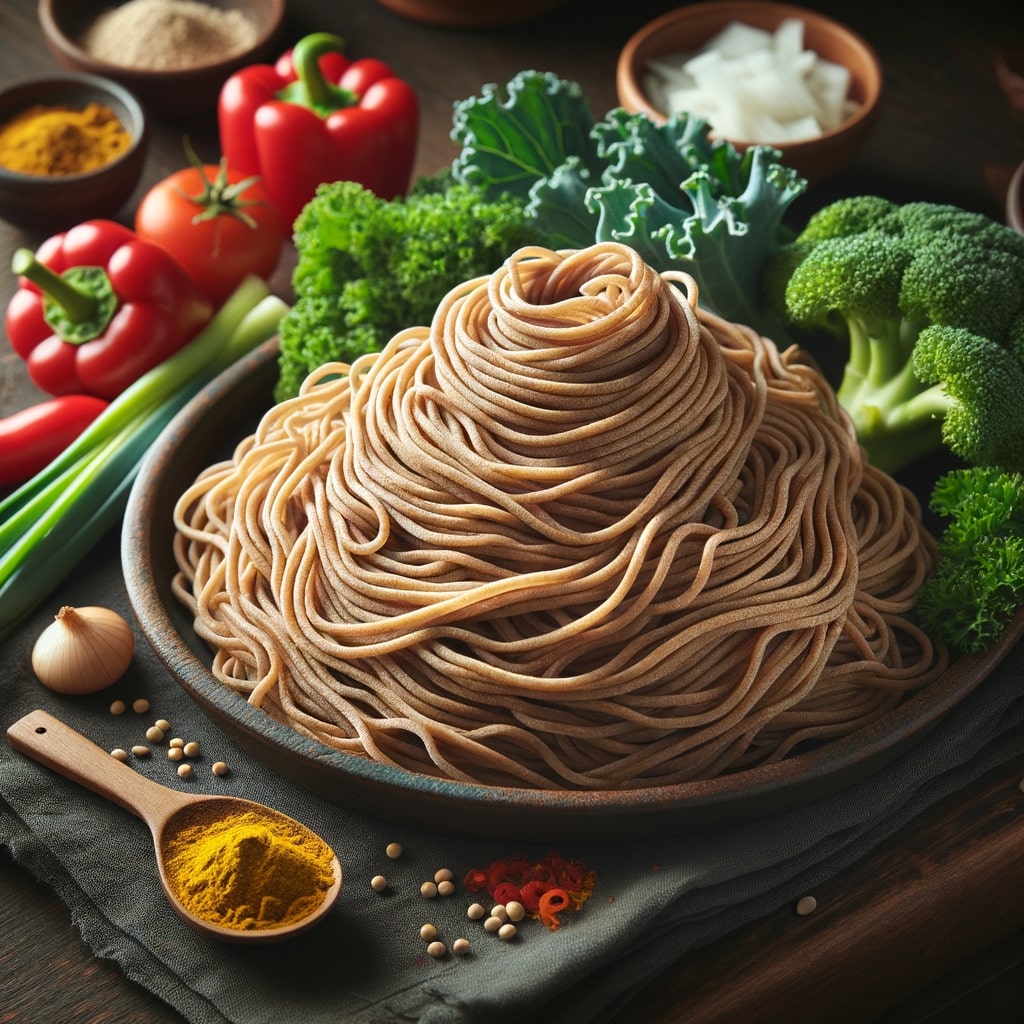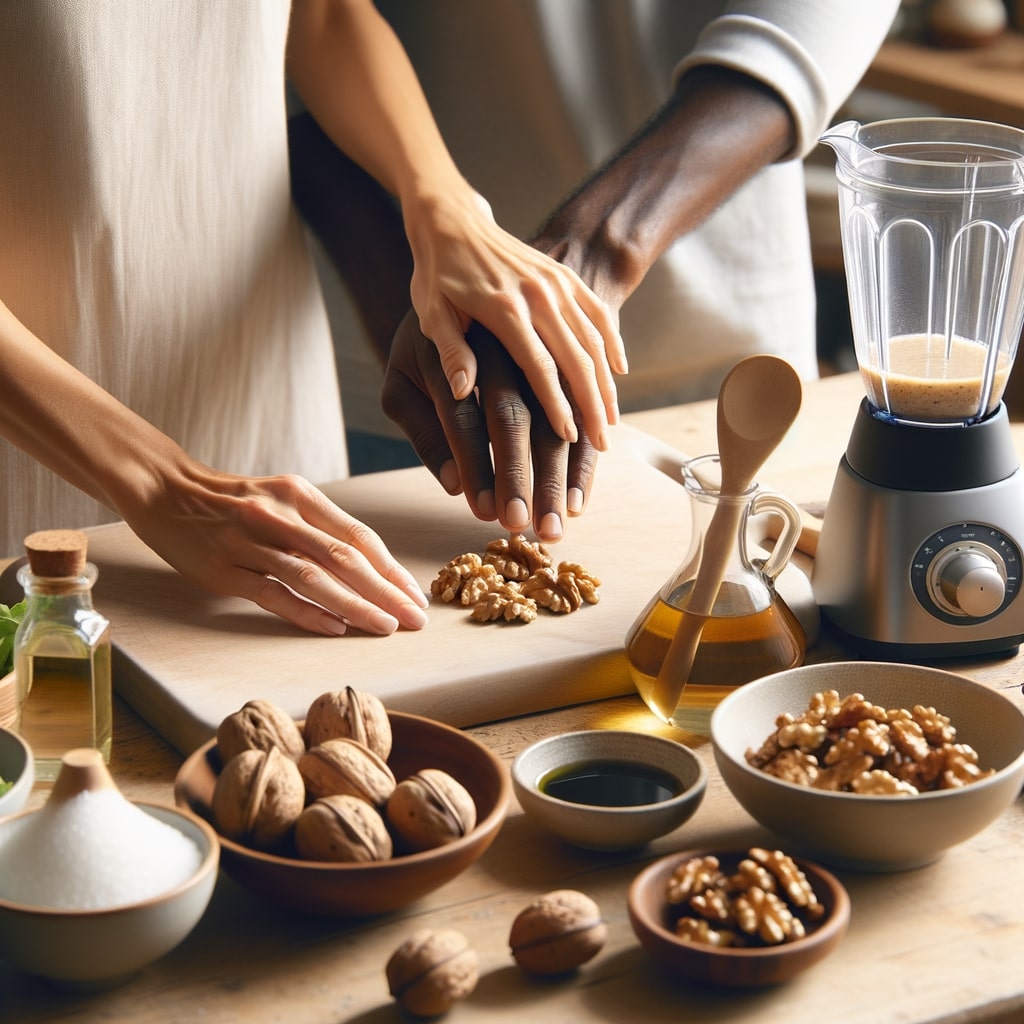
- Published on
Discover the Rich Flavors of Walnut Miso Noodles - A Seasonal Delight
- Authors

- Name
- About Us - HealthyFood2Go
Introduction
Welcome to a world where seasonal ingredients meet innovative flavors, creating a delightful culinary experience. The "Walnut Miso Noodles" recipe, a gem from 101 Cookbooks, is not just a dish; it's a celebration of health, taste, and versatility. Designed to cater to the health-conscious and flavor-seekers alike, this recipe is a perfect example of how simple ingredients, when combined thoughtfully, can create a nourishing and utterly delicious meal.
- The Heart of the Dish: Walnut Miso Dressing
- Whole Wheat Noodles: A Nutritious Base
- Seasonal Toppings: Flexibility and Freshness
- Customizing Your Noodle Bowl
- Step-by-Step Guide to Making Walnut Miso Noodles
- Step 1: Prepare the Walnut Miso Dressing
- Step 2: Cooking the Noodles
- Step 3: Preparing Seasonal Vegetables
- Step 4: Assembling the Dish
- Step 5: Customizing Your Bowl
- Step 6: Serving
- Step 7: Enjoy
- Additional Tips
- Conclusion: A Bowl Full of Possibilities
The Heart of the Dish: Walnut Miso Dressing

The Heart of the Dish: Walnut Miso Dressing
The star of this noodle bowl is undoubtedly the walnut-m
iso dressing - a creamy, savory blend that transforms the whole wheat noodles into a flavor-packed delight. Here's what makes it special:
- Combining Miso and Walnuts: The fusion of rich, nutty walnuts with the depth of miso paste creates a unique, creamy dressing. This combination is not just about taste; it's about bringing together nutrient-rich ingredients for a healthy yet indulgent experience.
- Miso Varieties: Experiment with different types of miso, like white or red, to find your preferred flavor profile. Each type of miso offers a different level of richness and depth.
- Nutty Additions: While walnuts are the primary choice, don't hesitate to try toasted cashews or almonds for a change in texture and taste.
Whole Wheat Noodles: A Nutritious Base

Whole Wheat Noodles: A Nutritious Base
Whole wheat noodles form the hearty base of this dish, offering a wholesome and satisfying texture. They are:
- Rich in Nutrients: These
noodles bring more fiber and essential nutrients compared to regular noodles, aligning with the health-conscious goals of many home chefs.
- Perfect Texture for Dressing: Their slightly firmer texture makes them an ideal canvas for the walnut miso dressing, absorbing the flavors beautifully.
Seasonal Toppings: Flexibility and Freshness

Seasonal Toppings: Flexibility and Freshness
One of the joys of this recipe is its adaptability to seasonal produce, making each preparation a new discovery. Here’s how you can play around:
- Spring and Summer Variations: Use ingredients like pencil-thin asparagus, scallions, and electric-pink chard for a fresh, vibrant bowl.
- Fall and Winter Adaptations: Opt for caramelized onions, roasted squash, or roasted tomatoes to create a warmer, heartier version.
- Protein Options: Add tofu for a protein boost or a poached egg for richness. Both complement the nutty and savory notes of the dressing.
Customizing Your Noodle Bowl
The Walnut Miso Noodles are all about customization:
- Varying the Vegetables: Whether it’s blanched, grilled, or roasted, each vegetable adds its unique flavor and texture. Don’t hesitate to experiment with leeks, spring onions, or chard stems.
- Choosing Your Noodles: While whole wheat noodles are recommended, feel free to substitute with farro spaghetti or soba noodles for a different experience.
- Additional Flavors: Enhance your bowl with Calabrian chile paste or sesame chile paste for a spicy kick, or a drizzle of sriracha for some heat.
Step-by-Step Guide to Making Walnut Miso Noodles

Step 1: Prepare the Walnut Miso Dressing

Step 2: Cooking the Noodles

Step 3: Preparing Seasonal Vegetables

Step 4: Assembling the Dish
Step 1: Prepare the Walnut Miso Dressing
- Ingredients: Gather white or red miso paste, toasted walnuts, a choice of nut oil (walnut or almond), and a splash of soy sauce.
- Blending: In a food processor or blender, combine the miso paste, a handful of toasted walnuts, a teaspoon of nut oil, and a dash of soy sauce. Blend until smooth, adding a little water to reach a creamy consistency.
Step 2: Cooking the Noodles
- Noodle Selection: Opt for whole wheat noodles, farro spaghetti, or soba noodles for a healthier choice.
- Boiling the Noodles: Bring a large pot of salted water to a boil. Add the noodles and cook according to the package
instructions until al dente. Drain and rinse under cold water to stop the cooking process and prevent sticking.
Step 3: Preparing Seasonal Vegetables
- Selection and Preparation: Choose vegetables like asparagus, scallions, chard, leeks, or spring onions. For a heartier option in cooler seasons, go for roasted squash or caramelized onions.
- Cooking Method: Depending on your preference, you can blanch, grill, or roast the vegetables. For example, blanch asparagus and chard in boiling water for a few minutes until tender but still crisp. Alternatively, roast squash or onions in the oven with a drizzle of olive oil until caramelized.
Step 4: Assembling the Dish
- Tossing Noodles with Dressing: In a large mixing bowl, toss the cooked noodles with the walnut miso dressing until evenly coated.
- Adding the Vegetables: Fold in your prepared vegetables, ensuring a good mix with the noodles and dressing.
Step 5: Customizing Your Bowl
- Protein Addition: For added protein, top your noodle bowl with slices of fresh tofu, a poached egg, or grilled chicken.
- Enhancing Flavors: Sprinkle in some herbs like basil or cilantro, or add a spicy element with a dab of Calabrian chile paste or sesame chile paste.
- Extra Crunch: For an additional crunch and nutty flavor, garnish with toasted walnuts, cashews, or almonds.
Step 6: Serving
- Plating: Serve the noodles in a bowl, ensuring a good balance of noodles, vegetables, and protein.
- Final Touches: Drizzle a bit more nut oil or a squeeze of sriracha on top for extra flavor, and garnish with a sprinkle of sesame seeds or nutritional yeast.
Step 7: Enjoy
- Taste Test: Before serving, taste and adjust seasoning if necessary, adding a bit more soy sauce or miso if desired.
- Serve Warm or Cold: This dish can be enjoyed warm immediately after preparation or served cold as a refreshing noodle salad.
Additional Tips
- Seasonal Variations: Don't hesitate to swap out vegetables based on what's in season for the freshest flavors.
- Cooking in Batches: The walnut miso dressing can be made in larger quantities and stored in the refrigerator for quick future meal preparations.
- Mindful Cooking: Pay attention to the textures and flavors as you cook. The beauty of this dish lies in its simplicity and the quality of its ingredients.
This detailed guide to Walnut Miso Noodles showcases the flexibility and creativity of this dish, making it a perfect choice for a nutritious and delicious meal any day of the week!
Conclusion: A Bowl Full of Possibilities
The Walnut Miso Noodles recipe is more than just a dish; it's a template for endless possibilities. It embraces the seasonality of ingredients and encourages personalization, making each preparation a unique culinary adventure. Whether you’re a seasoned cook or a beginner, this recipe is a delightful journey through flavors, textures, and nutrition. So, grab your ingredients and let your creativity lead the way to a delicious, healthful meal that changes with the seasons and your tastes. Bon appétit!
